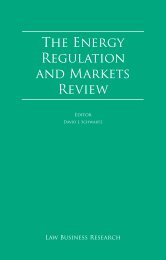U.S. Private Equity and VC Investments in Canada - Stikeman Elliott
U.S. Private Equity and VC Investments in Canada - Stikeman Elliott
U.S. Private Equity and VC Investments in Canada - Stikeman Elliott
Create successful ePaper yourself
Turn your PDF publications into a flip-book with our unique Google optimized e-Paper software.
Shareholder Agreement. Paramountcy would suggest that the answer is<br />
probably yes.<br />
It is possible to ensure that the shareholder agreement <strong>in</strong> question is<br />
not a USA. For example, it is possible to have a nom<strong>in</strong>ee shareholder<br />
with a s<strong>in</strong>gle non-vot<strong>in</strong>g share who is not a signatory to the<br />
shareholder agreement. Alternatively, the shareholder agreement<br />
could permit “negative” or “veto” control by allow<strong>in</strong>g the directors<br />
to vote on any particular matter while requir<strong>in</strong>g shareholder approval<br />
(by majority or super-majority vote) for a specified list of material<br />
matters, such as the issuance of shares.<br />
Governance <strong>and</strong> Control<br />
Generally <strong>VC</strong> <strong>and</strong> private equity <strong>in</strong>vestors will require the<br />
appo<strong>in</strong>tment of nom<strong>in</strong>ees to the board of directors. If nom<strong>in</strong>ees are to<br />
be appo<strong>in</strong>ted, it is important to consider the circumstances under<br />
which a shareholder’s right to nom<strong>in</strong>ate directors is to be reduced or<br />
term<strong>in</strong>ated. Such circumstances could <strong>in</strong>clude:<br />
• An <strong>in</strong>crease or decrease <strong>in</strong> the shareholder’s proportionate<br />
ownership from its <strong>in</strong>itial percentage, <strong>in</strong>clud<strong>in</strong>g as the result<br />
of the purchase or sale of shares, <strong>and</strong><br />
• Material default by the shareholder <strong>in</strong> discharg<strong>in</strong>g certa<strong>in</strong><br />
specified obligations.<br />
In each case, it is important to consider whether the shareholder<br />
would lose all of its nom<strong>in</strong>ees or just some of them.<br />
The agreement should also provide that any corporate law<br />
requirements relat<strong>in</strong>g to the number of Canadian resident directors<br />
are complied with by the nom<strong>in</strong>at<strong>in</strong>g shareholders.<br />
It is also critical to remember that, as is generally the case <strong>in</strong> the U.S.,<br />
directors of Canadian corporations who are nom<strong>in</strong>ees of a particular<br />
shareholder have a fiduciary duty, like all directors, to act <strong>in</strong> the best<br />
<strong>in</strong>terests of the corporation – even where this is <strong>in</strong>consistent with the<br />
<strong>in</strong>terests of the shareholder who nom<strong>in</strong>ated them. This can sometimes<br />
leave the director <strong>in</strong> a very awkward position. Interest<strong>in</strong>gly, the<br />
Supreme Court of <strong>Canada</strong> recently ruled <strong>in</strong> Peoples Department<br />
Stores v. Wise (2004), 244 D.L.R. (4th) 564 that directors’ duties are<br />
STIKEMAN ELLIOTT LLP: U.S. PRIVATE EQUITY AND <strong>VC</strong> INVESTMENTS IN CANADA<br />
19
















